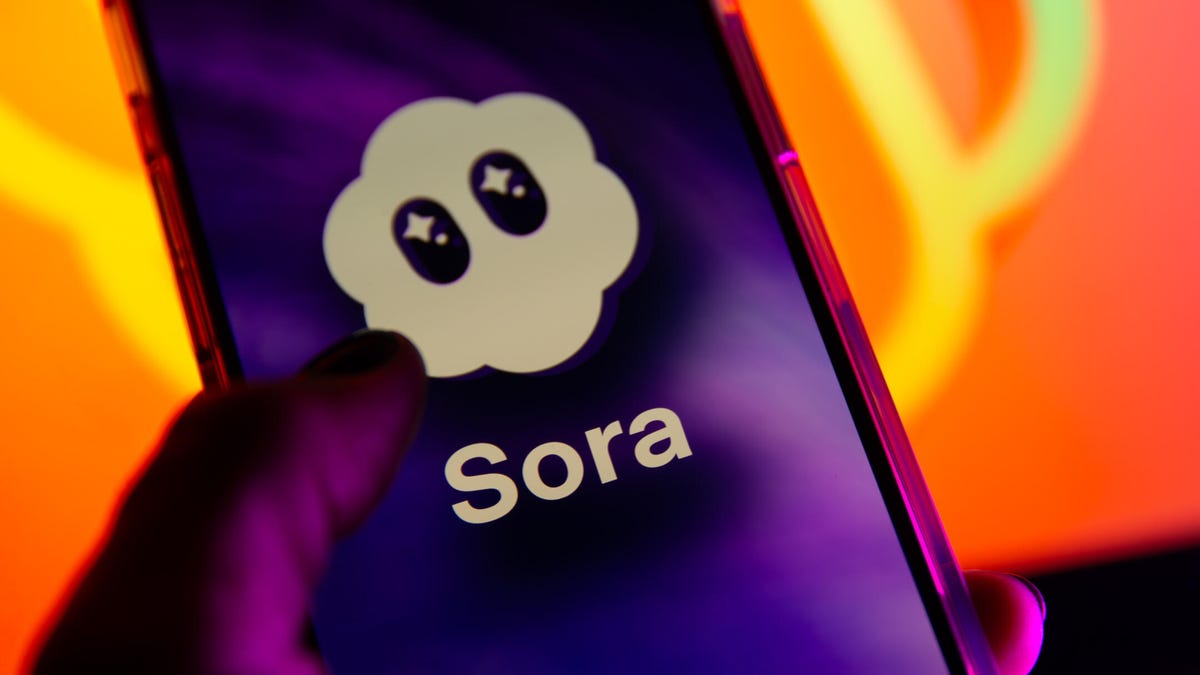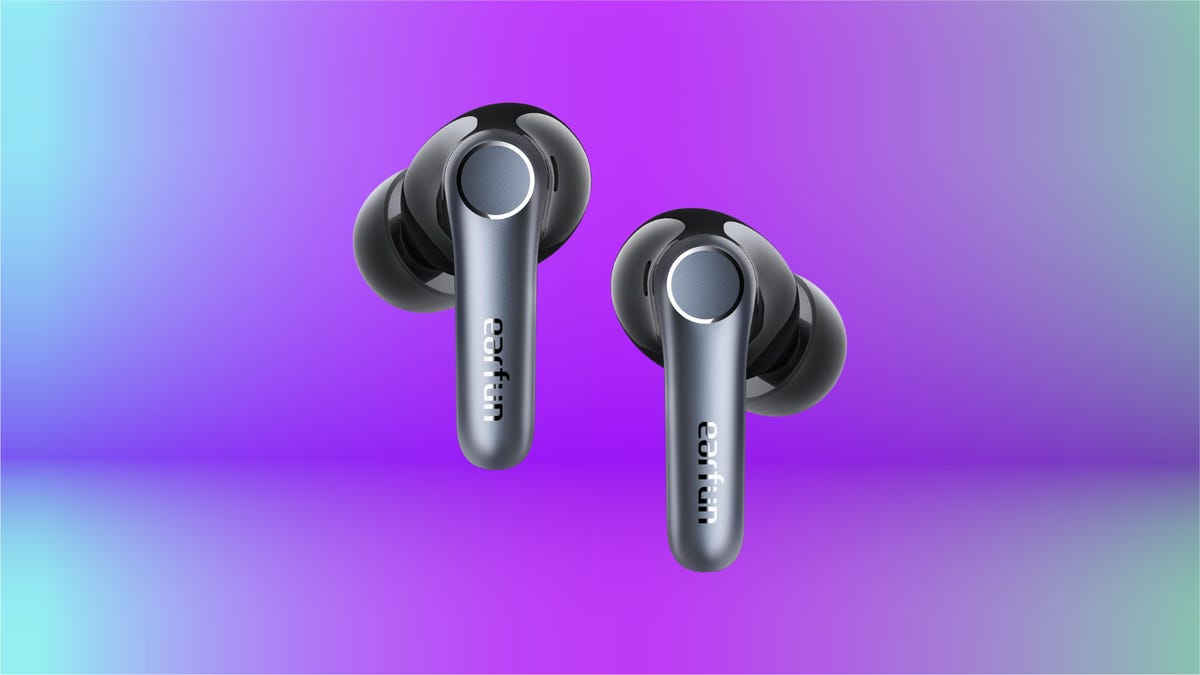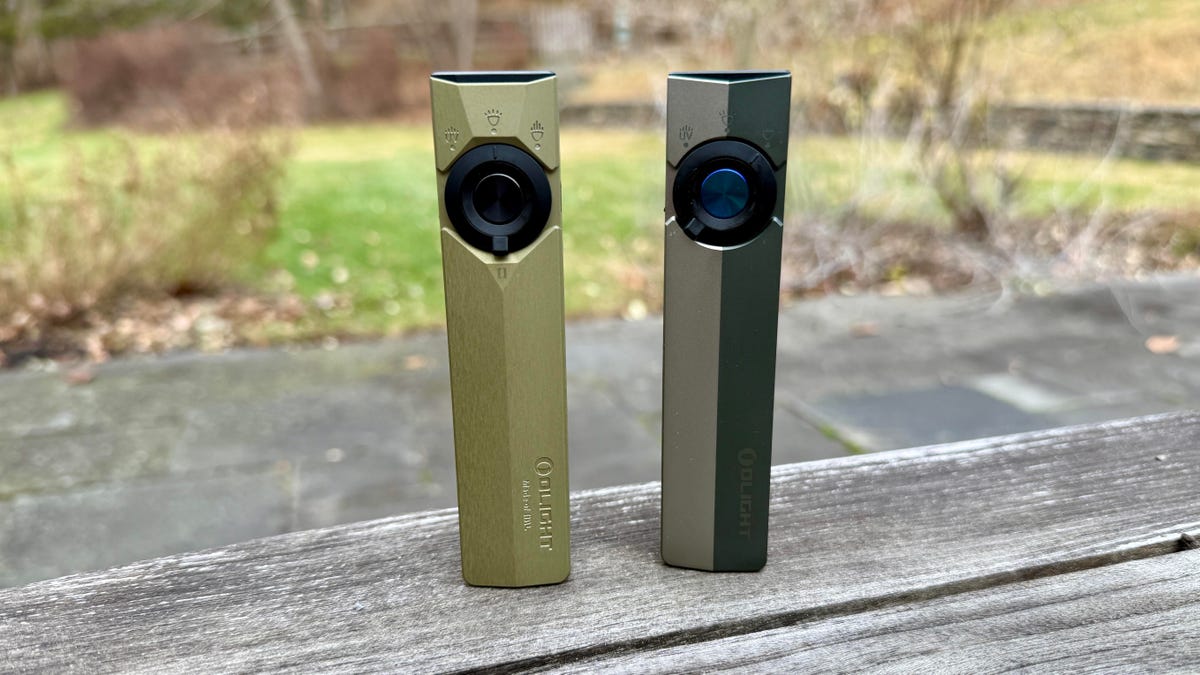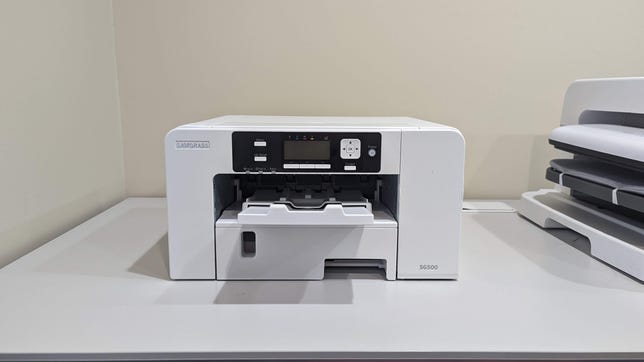Technologies
The Best Printers, According to the CNET Staff Who Use Them
Even in the modern age, we still need physical copies sometimes.

While 2023 feels like the distant future, filled with apps and digital files, we still sometimes need hard copies. Pictures need scanning, tickets need printing and lost cat posters must go on streetlights.
While we have a tested-to-destruction list for the best printers, we’ve also put together a list of printers the CNET staff use at home and the office, and the reasons why they chose that particular model.
A printer is one of those things that I don’t use often, and when I do need to use it, I hope that it works. I’ve gone through several printers in recent years, because every time I want to use it the ink is dried out or something else needs to be fixed. I was looking for a low-maintenance option that had affordable ink replacements, and that’s where I came across this Epson model.
It’s an all-in-one unit, so I can still scan documents to my PC when needed, but the best part is that I’ve yet to find the ink dried up when I wanted to use it. It also prints reliably for small and medium jobs. The ink isn’t expensive, and you can buy an XL version of the cartridge which offers 2.5x the capacity for a little extra money. Overall, it’s a great printer if you don’t need to print tons of pages in a short period of time (because it’s a little slow) but still want something that won’t make you go broke when you need new color or black ink.
— Jared DiPane
The big selling point of the EcoTank line is that it does away with cartridges. Even if you only print a couple of times a week, it’s worth the extra cost. My family prints more than that and we’re still on the original ink refills that came with the printer after years of use. The 3750 model was replaced by the 3850 in September 2021 but they’re essentially the same printer.
Because it’s a lower-end model in the line, the printer isn’t a speed demon with color prints and its tray holds only 250 sheets. It doesn’t have a touchscreen, just a small display and navigation buttons that aren’t backlit. But it has all the other features I’d expect from a compact all-in-one for a small office or home office: You get wired and wireless connections with mobile printing, an auto-document feeder and automatic two-sided printing. Print quality is respectable, too. It excels on black-and-white documents but it’s OK for photos as well.
— Josh Goldman
Sublimation is the process of transferring ink from paper to another material like t-shirts, mugs and canvases. There are plenty of options if you are looking to convert a standard printer to use sublimation ink but if possible you should buy a dedicated printer for the job.
The Sawgrass SG500 is purpose-built to print using sublimation ink and paper. It works great too: You can print up a storm of artwork to put on t-shirts for the whole family. If you’re interested in starting your own business using your own art, then this printer is well worth the price.
— James Bricknell
I’ve had the nearly identical older, now-discontinued version of this printer (the HL-L2340DW) for at least five years and it’s been solid. Unlike some other printers I’ve had, it rarely gets disconnected from the Wi-Fi network so my whole family can easily print stuff from their various computers and phones without me having to troubleshoot the connection. Printing is fast and since its laser ink isn’t expensive per sheet. I’m fine with black and white and the few times I need color I’ll print at the local drugstore.
The one downside is that double-sided printing always jams the feed so I have to take it apart, pull out the paper and restart the job. Sometimes the software seems to select double-sided on its own and I discover the hard way, but once I change back to single-sided (which is what we use most of the time) it’s all good. (Editors’ note: Avoid the HL-L2300DW version, which lacks Wi-Fi.)
— David Katzmaier
My wife loves to make stickers using our HP Envy and the Cricut Explore 3. The Envy has excellent color saturation, especially on the glossy sticker paper she uses. It also has the added bonus of being a scanner, which is especially helpful to scan all our mortgage documents while we move house.
The biggest selling point though is the two-year supply of new inks. Running out of ink is the worst part of using a printer at home, but HP’s replacement service takes away that hassle. It’s worth the money just for that.
— James Bricknell
I have to make an absurd amount of labels for our son’s Tupperware, school items, folders, cooking products and so on. This makes it so easy. There are different fonts, sizes and styles to choose from.
The keyboard is dreamy and a far cry from the old-school turnstile. I also love the built-in cutting function. Gone are the days of needing scissors when you’re done.
— Danielle Ramirez
Full disclosure: I was the guy who proudly kept his home printer-free while using the office printer for those once- or twice-a-month necessities. Then came the pandemic, and I found myself in need of shipping labels and other documents at home. This tiny HP LaserJet fit perfectly on the bookshelf in my equally tiny Brooklyn apartment, and it reliably prints from PCs, Macs, Chromebooks and smartphones, all over Wi-Fi.
The 2022 model (M110w) is nearly identical to my 2020-era unit (M15w), but take note: The «cheaper» M110we seems to require a subscription to HP’s cloud-ink solution, so go with the pricier model if you want to avoid an always-on connection. Also, this laser printer is black-and-white only, but that’s a feature for me, not a bug.
— John P. Falcone
Originally published June 2022, and updated periodically. Most recent update swaps the Brother HL-L2305DW for the older, discontinued HL-L2340DW.
Other articles from the CNET team
Technologies
Sora and Google’s Nano Banana Pro Are Slammed, and Scale Back Free Videos and Images
OpenAI and Google are reducing the number of image or video requests you can make on their latest media-generation platforms.

Maybe it’s because of the holiday weekend.
OpenAI’s video generator Sora and Google’s image generator nano banana pro are placing new limits on how many videos (in the case of Sora) and AI images (in the case of nano banana pro) you can make per day.
With more people using their Thanksgiving weekend idle time to, say, make AI videos of cats as angry service industry cashiers, it’s likely these services are hitting their limits.
Bill Peebles, OpenAI’s head of Sora, posted on X, «our gpus are melting, and we want to let as many people access sora as possible!» GPUs are the graphics processing units used by AI services for the complex computations they need to perform.
Peebles wrote that Sora will limit free video generation to six videos per day. ChatGPT Plus and Pro accounts won’t see any changes.
«And everybody can purchase additional gens as needed,» he wrote.
Don’t miss any of our unbiased tech content and lab-based reviews. Add CNET as a preferred Google source.
Gemini limits
As for Google’s image generator, a Gemini support page says that those without a Google AI plan are now limited to two images generated and edited per day with nano banana pro. The previous limit was three, according to 9to5Google, which also spotted new usage limits on Gemini 3 Pro that are variable. The same support page says free access to Gemini 3 Pro Thinking includes «Basic access — daily limits may change frequently.»
The limit for nano banana (the previous 2.5 non-pro version) is 100 free images per day.
A representative for Google did not immediately respond to a request for comment.
(Disclosure: Ziff Davis, CNET’s parent company, in April filed a lawsuit against OpenAI, alleging it infringed Ziff Davis copyrights in training and operating its AI systems.)
Technologies
If You Don’t Want to Pay AirPod Prices, I Found Great Noise Canceling Earbuds That Are Only $53 for Black Friday
You don’t need to spend a fortune to get a great pair of earbuds.

Black Friday deal alert: If you’re looking for a new pair of noise-canceling earbuds, there are some good deals on Apple AirPods right now, but you might be able to spend half as much to get similar performance. I’ve found that the Air Pro 4 earbuds from Earfun are legitimate contenders to the AirPods, at a much lower price. Right now at Amazon for Black Friday, you can get the Air Pro 4s for a steal — they’re 34% off, which drops their price down to $53.
In short, they’re great, and the black ones are currently available on Amazon for $53, near the lowest price we’ve ever seen them sell for. The other colors are also on sale; the glossy white and royal blue are both $68.
Hey, did you know? CNET Deals texts are free, easy and save you money.
HEADPHONE DEALS OF THE WEEK
-
$248 (save $152)
-
$170 (save $181)
-
$199 (save $150)
How these earbuds silence the noise around you
I prefer in-ear headphones because they offer active, electronic and passive noise cancellation. Passive noise cancellation basically consists of plugging your ears with the rubbery tips included with the earbuds.
The Earfuns fit well for me when I use the second-largest of the five swappable ear tip sizes, and they stay sealed and comfortable for hours. Sometimes I have to reseal one after I yawn or something, but that’s the case with other in-ear headphones, too.
For reading, I prefer Earfun’s «Strong ANC» noise-canceling mode, which makes a big difference when blocking out the noise around you, but there are a bunch of other noise-cancellation options. The Ambient Sound function is good for when I want to pay attention to my surroundings.
Overall, I found the app easier to use than Sony’s and just as capable. The main difference is that Sony’s app has a variable slider for ambient sound.
The Earfun app also includes a white noise section in the app. Normally, I prefer Spotify for white noise (and I download my favorite playlists for offline listening) but this feature is useful for people who don’t have another music service. It includes birdsong, waves and rainfall, all of which are short clips that repeat automatically.
Why I chose these earbuds over AirPods
These headphones have every other feature I’d expect, including the ability to connect to two devices simultaneously and programmable touch-sensitive controls on the buds. Plus, battery life has been more than ample for me, even after a marathon reading session.
There’s also a finder function if you misplace either earbud (unlike Apple FindMy, however, they have to be connected and in Bluetooth range). For actual music and voice calling quality, they sound fine, albeit not as good as my big Sonys.
I have an iPhone and briefly thought about buying Apple AirPods, but I didn’t want to spend the money. The AirPods 4 with noise cancellation cost $115 more than these Earfuns and have an open-ear design, so they rely entirely on the electronic (not passive) method. The AirPods Pro 2 are in-ear and superb, but I didn’t want to spend $250 on a pair of secondary headphones.
Yes, I could probably save some money on an even less expensive pair of in-ear noise-cancelling headphones, but I’m not sure I’d be as happy with their fit, long-term comfort, battery life and noise-cancellation performance. The Earfun Pro 4 buds help me relax and concentrate on my book, and for me that’s priceless.
For more headphone savings, check out our roundup of all the best deals on headphones, or find bargains of all kinds in our roundup of the best Amazon Prime Day deals going on now.
Join Our Daily Deals Text Group!
Get hand-picked deals from CNET shopping experts straight to your phone.
By signing up, you confirm you are 16+ and agree to receive recurring marketing messages at the phone number provided. Consent is not a condition of purchase. Reply STOP to unsubscribe. Msg & data rates may apply. View our Privacy Policy and Terms of Use.
Technologies
I Have a Flashlight Fetish and My Favorite New Olight Is 20% Off for Black Friday
Olight’s sleek new pocket flashlight, the ArkPro, is normally $100. But it’s down to $80 for Black Friday and Cyber Monday.

Truth be told be told, I have a thing for flashlights. Not a bad thing, just a certain appreciation for a well-designed torch, as the Brits might say.
Bright flashlights are good, naturally, but a small, sleekly designed rechargeable everyday carry flashlight that puts out a decent amount of light is high on my list of flashlight favorites, and the new Olight ArkPro and its slightly brighter sibling, the ArkPro Ultra, fit the bill. They’re both on sale for Black Friday and Cyber Monday for 20% off. The ArkPro is down to $80 ($100 list) while the ArkPro Ultra’s price has dipped to $104 ($130 list).
The flashlights are upgraded versions of Olight’s Arkfeld Pro ($70) and Arkfeld Ultra ($84), with higher brightness ratings. Both new models have similar flat, IPX7 waterproof designs with sturdy metal bodies and a magnetic base that allows you to attach the flashlight to anything metal. There’s also an integrated clip-on mount, and they come in cool white and neutral white color temperature versions.
You get three lighting modes: a 1,500-lumen floodlight mode (1,700 lumens for the ArkPro Ultra), an 800-lumen, 205-meter reach spotlight mode (it’s the same for the Ultra) and a UV light mode. You can also activate a green beam laser pointer.
The flashlights come with a wireless charger that magnetically attaches to the base, but you can also charge them via USB-C, which I found more convenient.
I mainly tested the flashlights while walking my dog at night in a pretty remote rural area in New York. The floodlight mode works better for dog walking, but I’d sometimes switch to spotlight mode when I wanted to gauge what was further ahead of us or check whether anything was lurking in the trees or bushes.
These smaller EDC flashlights are well-suited to a variety of activities, including camping and anything you’re doing where you’d like to have a flashlight handy that you can easily carry around in a pocket. You can find similar flat flashlight designs from other brands on Amazon — some of them for significantly less money. However, Olight is considered a premium EDC flashlight brand, though some flashlight enthusiasts are less enthusiastic about the brand for a few reasons. That said, I’m just fine recommending these new ArkPro models when they’re discounted like this. And they do make for nice gifts this time of year.
Join Our Daily Deals Text Group!
Get hand-picked deals from CNET shopping experts straight to your phone.
By signing up, you confirm you are 16+ and agree to receive recurring marketing messages at the phone number provided. Consent is not a condition of purchase. Reply STOP to unsubscribe. Msg & data rates may apply. View our Privacy Policy and Terms of Use.
-

 Technologies3 года ago
Technologies3 года agoTech Companies Need to Be Held Accountable for Security, Experts Say
-

 Technologies3 года ago
Technologies3 года agoBest Handheld Game Console in 2023
-

 Technologies3 года ago
Technologies3 года agoTighten Up Your VR Game With the Best Head Straps for Quest 2
-

 Technologies4 года ago
Technologies4 года agoBlack Friday 2021: The best deals on TVs, headphones, kitchenware, and more
-

 Technologies4 года ago
Technologies4 года agoVerum, Wickr and Threema: next generation secured messengers
-

 Technologies4 года ago
Technologies4 года agoGoogle to require vaccinations as Silicon Valley rethinks return-to-office policies
-

 Technologies4 года ago
Technologies4 года agoOlivia Harlan Dekker for Verum Messenger
-

 Technologies4 года ago
Technologies4 года agoiPhone 13 event: How to watch Apple’s big announcement tomorrow







